Summer is here, and with it comes the perennial question: which swimsuit should you wear or purchase this season? The world of swimwear is vast and varied, with styles evolving significantly. From its modest beginnings to today’s fashion-forward and eco-friendly designs, swimwear has a rich history that mirrors societal changes and technological advancements. In this article, we will dive into the origins of swimwear, tracing its journey through different eras and highlighting key milestones that have shaped its evolution.
We’ll explore the iconic shapes and brands that have defined swimwear for women and men and discuss the growing importance of sustainability in this vibrant industry. Prepare to embark on a fascinating journey through time, fashion, and environmental consciousness as we uncover the story behind what we wear at the beach and poolside.
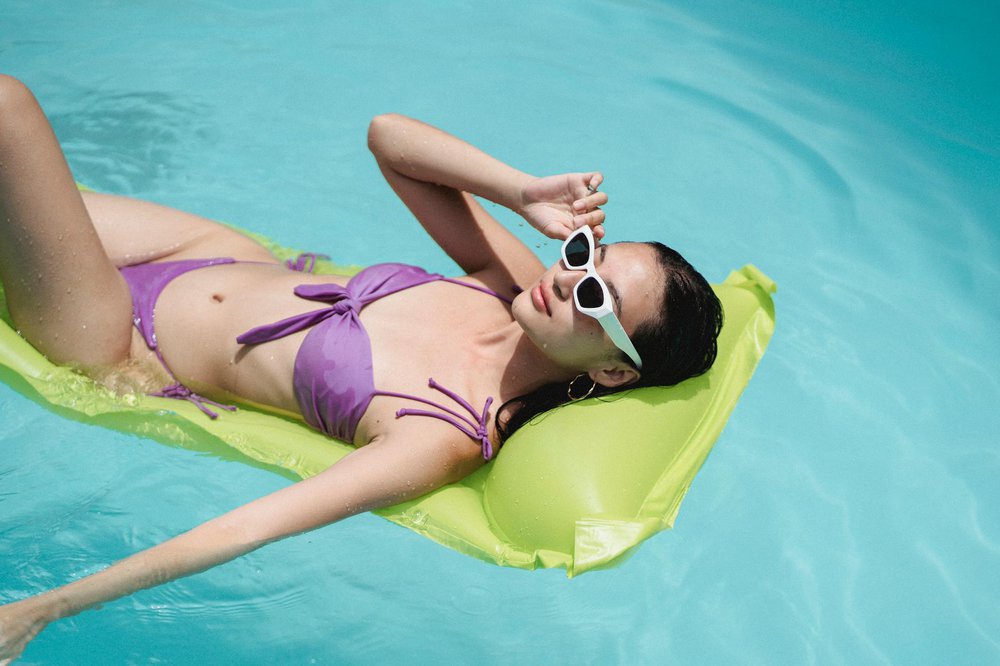
When Swimwear Was Created and By Whom?
Swimwear has ancient origins, dating back to the earliest civilizations when people sought practical garments for bathing and swimming. The historical journey of swimwear begins in ancient Greece and Rome, where both men and women swam naked or in simple, functional garments. Mosaics from this period depict women in two-piece garments that resemble modern bikinis, suggesting an early understanding of swimwear.
However, the modern notion of swimwear began taking shape in the 19th century. The Victorian era marked a significant turning point, driven by the changing societal attitudes towards leisure and modesty. The Industrial Revolution brought about increased leisure time and the rise of seaside resorts, creating a need for appropriate attire for swimming and sunbathing. During this period, swimwear was designed primarily for modesty rather than functionality, often consisting of heavy, cumbersome materials like wool. Women wore full-length dresses with bloomers, while men donned one-piece woollen suits that covered their bodies from neck to knees.

The early 20th century brought further evolution in swimwear, driven by cultural shifts and the influence of sports. The growing popularity of swimming as a competitive sport necessitated more functional and streamlined swimwear. In the 1920s, Australian swimmer Annette Kellerman, often credited as the “mother of modern swimwear,” revolutionized the industry by introducing form-fitting, one-piece swimsuits. Kellerman’s designs, which were both practical and daring, challenged the conservative norms of the time and paved the way for the future of swimwear fashion.

French fashion designer Jacques Heim, who owned a beach shop in the French Riviera resort town of Cannes, introduced a minimalist two-piece design in May 1946 which he named the “Atome”, after the smallest known particle of matter. The bottom of his design was just large enough to cover the wearer’s navel.
In 1946, designer Jacques Heim launched a chain of sportswear boutiques and reintroduced his two-piece swimsuit, the Atome, in June, branding it as “the world’s smallest bathing suit.” However, on July 5, 1946, French engineer Louis Réard made headlines by presenting an even skimpier two-piece swimsuit modeled by a Parisian stripper before a group of reporters. Réard named his creation the Bikini, claiming it was “smaller than the smallest bathing suit.” Unlike Heim’s design, Réard’s bikini boldly exposed the navel, a first in swimwear history. Despite sparking controversy, the bikini proved to be a financial success. Réard’s catchy name quickly became synonymous with the revolutionary new style of swimwear.
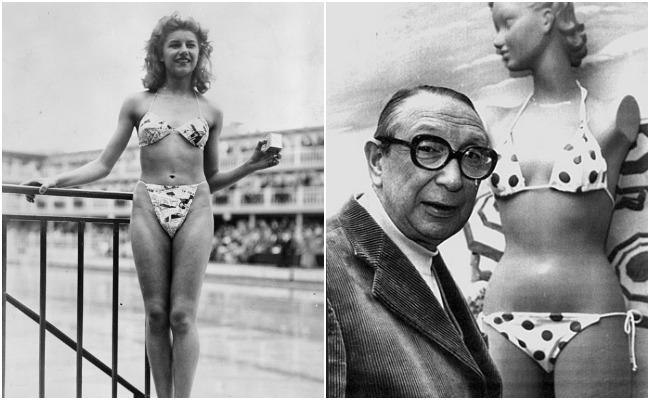
A combination of cultural, social, and technological factors influenced the creation and evolution of swimwear. From ancient mosaics to Victorian modesty and early 20th-century sportswear innovations, swimwear has transformed remarkably, reflecting broader societal and fashion changes. The journey from cumbersome woollen suits to sleek, performance-driven designs marks the beginning of an ongoing evolution that continues to shape how we dress for the water today.
Key Milestones in Swimwear History
The history of swimwear is marked by significant milestones that reflect broader social changes and advancements in fabric technology. Each era brought new shapes and styles, transforming swimwear from modest coverings to bold fashion statements.
1900s-1920s: The Birth of Modern Swimwear

The early 20th century saw the gradual shift from restrictive, full-body swimsuits to more practical designs. Annette Kellerman’s introduction of the one-piece swimsuit in the 1910s was revolutionary. Her design, which was both functional and revealing by the standards of the time, paved the way for future swimwear innovations. By the 1920s, swimsuits became slightly shorter and tighter, reflecting the changing attitudes towards women’s bodies and greater societal freedoms.
1930s-1940s: The Rise of Glamour and Function

The 1930s introduced the first use of elastic fibers in swimwear, allowing for better fit and comfort. This period also saw the introduction of the two-piece swimsuit, though it was far from the bikini we know today. These designs provided more freedom of movement, which was essential as swimming became a popular recreational activity. During World War II, fabric rationing led to further reduction in swimsuit sizes, inadvertently pushing fashion boundaries.
1946: The Invention of the Bikini

One of the most iconic milestones in swimwear history was the invention of the bikini by French engineer Louis Réard in 1946. Named after the Bikini Atoll, the design was scandalous for its time, featuring a two-piece ensemble that left the midriff bare. The bikini’s initial reception was controversial, but it gradually gained acceptance, especially after being popularized by Hollywood stars like Brigitte Bardot in the 1950s.
1950s-1960s: The Era of Hollywood and High Fashion

The post-war period saw swimwear become more glamorous and fashionable. Designers like Emilio Pucci and Christian Dior entered the market, bringing high fashion to the beach. Swimsuits of this era emphasized curves, often with built-in bras and boning for structure. The development of new synthetic fabrics like Lycra in the late 1950s allowed for even greater flexibility and comfort.
1970s-1980s: Bold and Bright
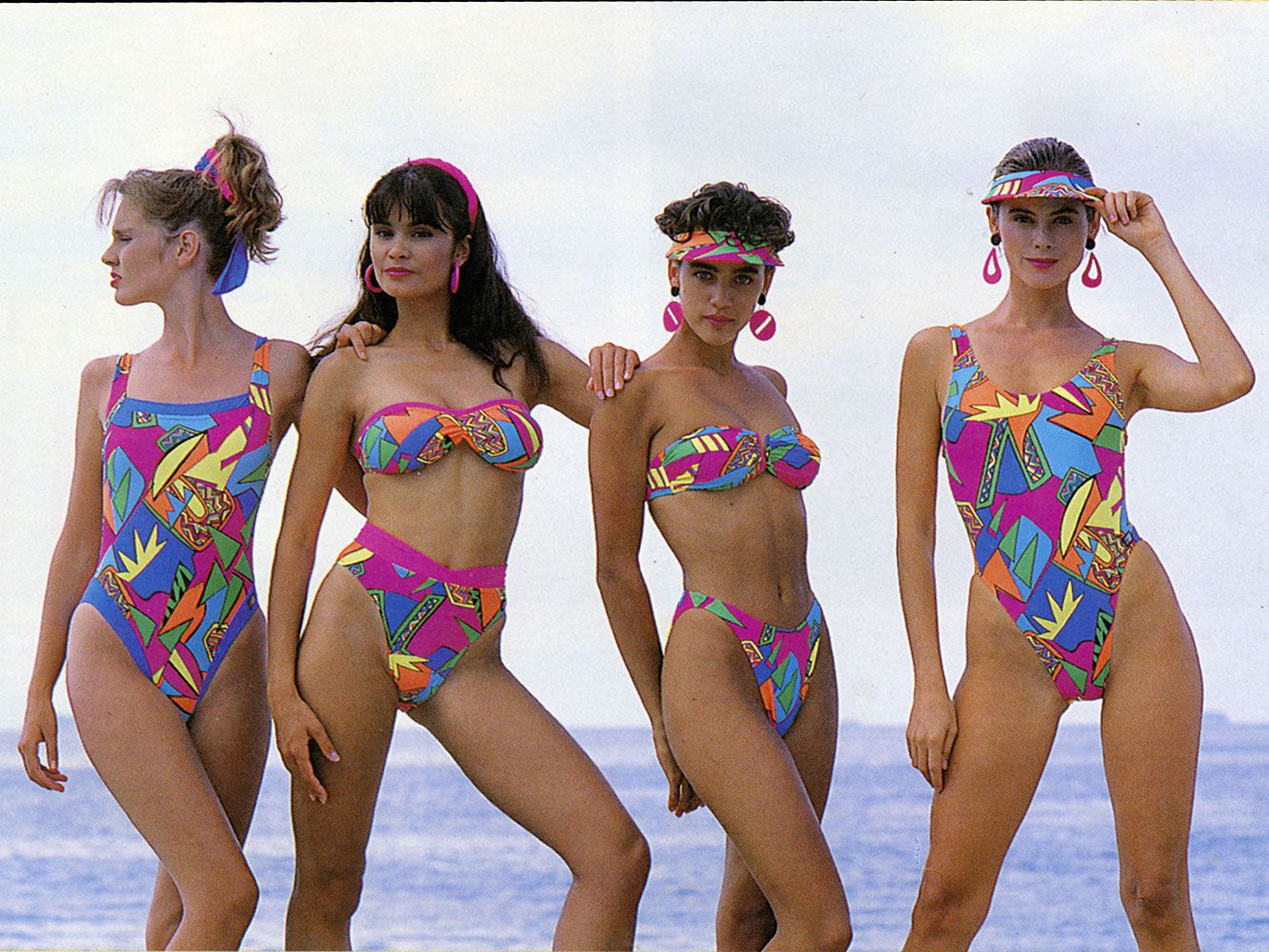
The 1970s and 1980s were characterized by bold, colorful designs and a focus on athleticism. Swimwear became more diverse in style, with the introduction of high-cut legs, string bikinis, and more revealing monokinis. Brands like Speedo revolutionized competitive swimwear with their streamlined designs, while fashion brands continued to push boundaries with eye-catching patterns and innovative cuts.
1990s-Present: Diversity and Sustainability

The 1990s brought about a greater emphasis on body positivity and diversity in swimwear. Designs became more inclusive, catering to a wide range of body types and personal styles. The rise of the internet and social media in the 2000s further democratized swimwear fashion, with trends rapidly evolving and a greater emphasis on individual expression.
In recent years, sustainability has become a key focus in the swimwear industry. Brands are increasingly using eco-friendly materials and ethical production practices to meet the growing demand for sustainable fashion. This shift reflects broader societal concerns about the environment and a commitment to responsible consumption.
The history of swimwear is a testament to the interplay between fashion, technology, and social change. From the modest designs of the early 20th century to the bold, diverse, and sustainable options available today, swimwear continues to evolve, reflecting the dynamic nature of fashion and society.
Today’s Key Shapes of Swimsuits for Women and Men
Women’s Swimwear
Bikini
The bikini remains a timeless favorite, offering a versatile and customizable option for women. The two-piece design allows for various combinations of tops and bottoms, from triangle tops and bandeau styles to high-waisted and string bottoms. Brands like Victoria’s Secret are renowned for their diverse bikini collections, catering to different body types and preferences.

One-Piece Swimsuit
The one-piece swimsuit has made a significant comeback, blending style and practicality. Modern designs range from sporty to elegant, with features like plunging necklines, cutouts, and high-cut legs adding a contemporary twist. Speedo is a prominent brand in this category, known for their functional yet fashionable swimwear suitable for both athletic and leisurely purposes.

Tankini
The tankini combines the modesty of a one-piece with the convenience of a two-piece, featuring a tank top paired with bikini bottoms. This style is popular among women seeking more coverage while maintaining the flexibility of a two-piece. Lands’ End offers a wide range of tankinis, known for their comfort and variety of styles.

High-Waisted Swimsuit
High-waisted swimsuits are a nod to retro fashion, offering a flattering and comfortable fit. These swimsuits accentuate the waist and provide more coverage, making them a favorite for those who appreciate vintage styles. Retro-inspired brands like ModCloth are famous for their high-waisted collections, blending classic designs with modern materials.

Monokini
The monokini is a daring style that combines elements of both one-piece and bikini designs, often featuring strategic cutouts. This style is perfect for making a bold fashion statement at the beach or pool. Beach Bunny is a brand known for its eye-catching monokinis, featuring intricate designs and luxurious fabrics.
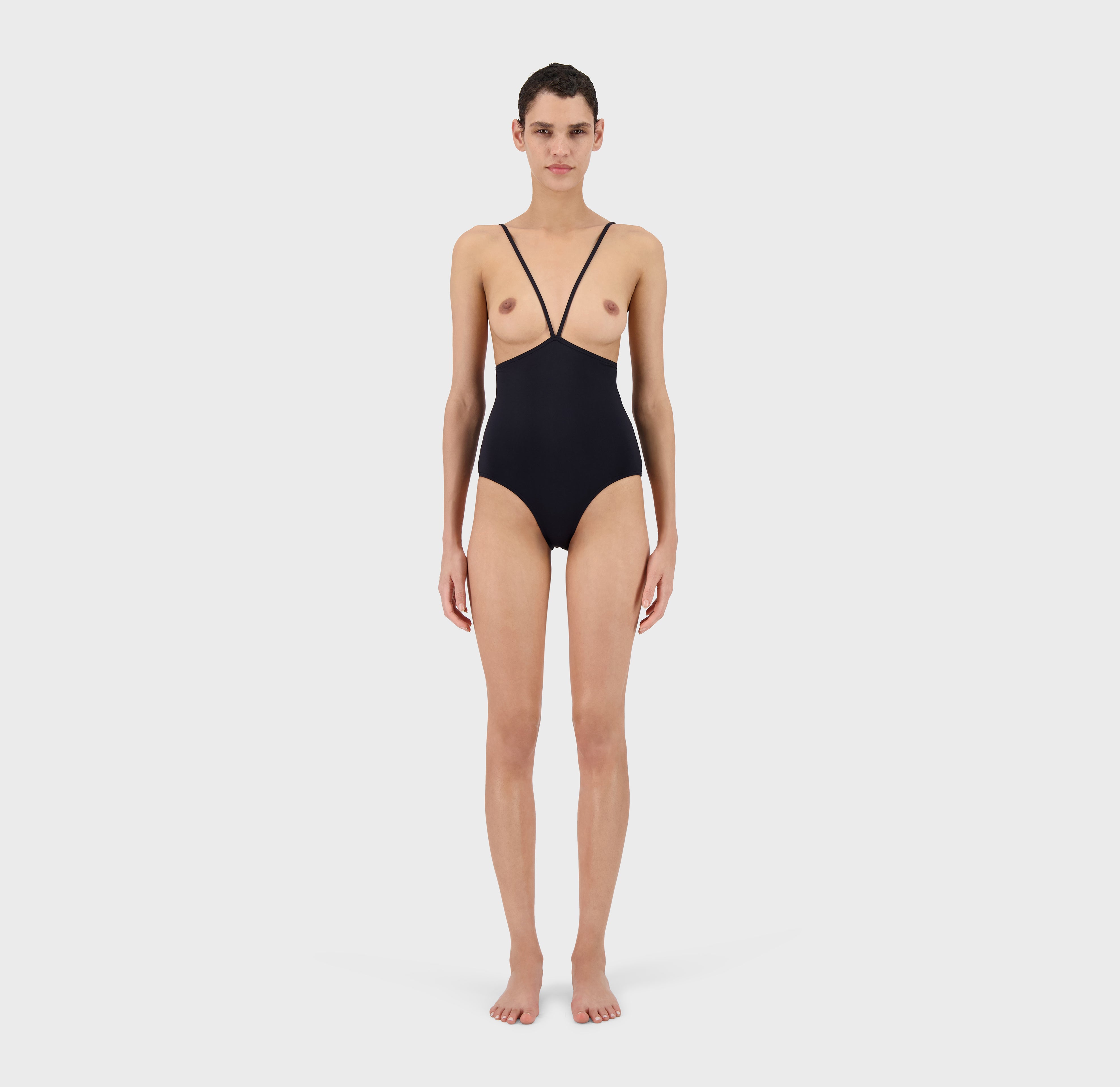
Men’s Swimwear
Boardshorts
Boardshorts are a popular choice for their comfort and functionality, ideal for both surfing and casual beachwear. They typically extend to the knee and are made from quick-drying materials. Quiksilver is a leading brand in this category, offering a variety of styles and patterns that cater to both performance and fashion.
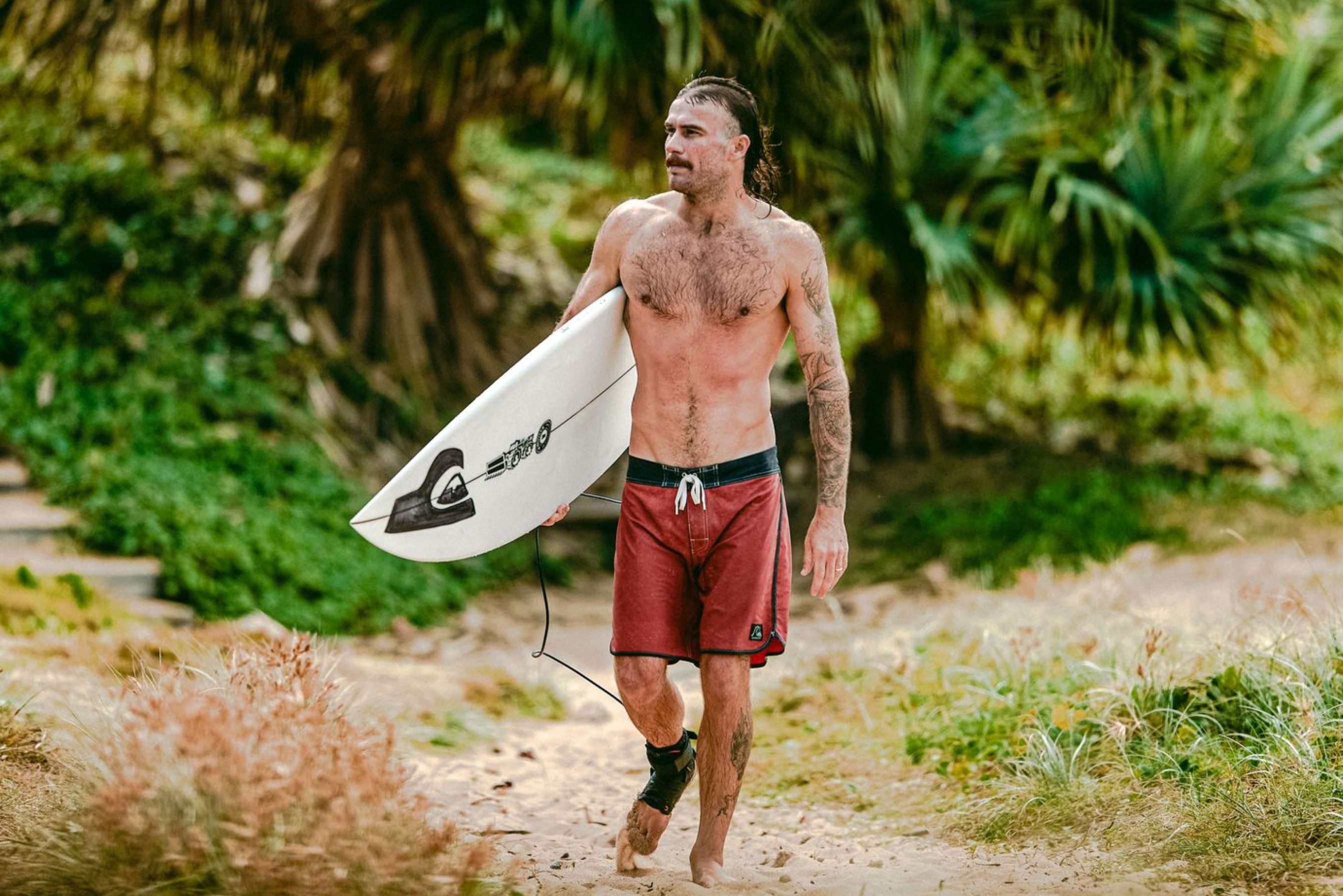
Swim Trunks
Swim trunks are a versatile option, shorter than boardshorts and available in a range of lengths. They are suitable for various water activities and casual beach outings. Tommy Hilfiger is well-known for their stylish swim trunks, blending classic designs with modern trends.

Briefs
Swim briefs, also known as Speedos, offer minimal coverage and maximum freedom of movement. They are favored by competitive swimmers and those who prefer a more streamlined look. Speedo is the quintessential brand for swim briefs, renowned for their high-performance designs used by professional swimmers worldwide.

Square Leg Swimsuits
Square leg swimsuits provide a balance between briefs and trunks, offering more coverage than briefs while maintaining a sleek fit. They are popular among men who seek a blend of style and functionality. Arena is a top brand in this category, offering swimwear that combines performance and comfort.

Jammers
Jammers are knee-length swimwear designed primarily for competitive swimming. They provide compression and reduce drag, making them ideal for serious swimmers. TYR is a leading brand for jammers, known for their advanced technology and durable materials used in professional swimwear.

In today’s diverse swimwear market, there is a style to suit every preference and body type, from classic bikinis and one-pieces for women to functional boardshorts and swim trunks for men. Each design offers unique features that cater to different needs, ensuring that everyone can find the perfect swimsuit for their summer activities. As swimwear continues to evolve, the emphasis on inclusivity and fashion-forward designs remains at the forefront, reflecting the dynamic nature of this essential summer wardrobe staple.
Sustainability and Ecology in Swimwear
As environmental awareness grows, the swimwear industry is increasingly prioritizing sustainability and eco-friendly practices. Many brands are committed to reducing their environmental impact through the use of recycled materials, ethical production processes, and innovative designs. Here are three brands that are leading the way in sustainable swimwear.
1. RIVEA
RIVEA is at the forefront of sustainable swimwear, combining luxury with eco-conscious practices. The brand uses ECONYL® yarn, a regenerated nylon made from waste such as fishing nets, fabric scraps, and industrial plastic. This innovative material not only reduces waste but also provides high-quality, durable swimwear. RIVEA is dedicated to ethical production, ensuring fair labor practices and minimizing their carbon footprint. Their stylish designs cater to a wide range of preferences, making sustainability fashionable and accessible. Check the new collection here.

2. Patagonia
Patagonia, renowned for its commitment to environmental responsibility, extends its eco-friendly ethos to its swimwear line. The brand uses recycled polyester and nylon in their swimsuits, diverting waste from landfills and reducing the need for virgin materials. Patagonia’s swimwear is designed for durability and performance, ensuring long-lasting products that withstand the elements. Additionally, Patagonia is a member of the 1% for the Planet initiative, donating a portion of their profits to environmental causes. Their swimwear collection reflects their dedication to sustainability, combining function and eco-conscious design.

3. Outerknown
Founded by professional surfer Kelly Slater, Outerknown is a brand that emphasizes sustainability in every aspect of their business. Their swimwear is made from recycled and renewable materials, such as ECONYL® and organic cotton. Outerknown is committed to transparency and ethical manufacturing, ensuring their products are made in fair and safe working conditions. Their swimwear designs are both stylish and functional, appealing to eco-conscious consumers who value quality and sustainability. Outerknown also engages in various environmental initiatives, furthering their mission to protect the planet.

The swimwear industry is making significant strides towards sustainability, with brands like RIVEA, Patagonia, and Outerknown leading the charge. By incorporating recycled materials, ethical production practices, and innovative designs, these brands are setting new standards for eco-friendly fashion. As consumers become more aware of their environmental impact, the demand for sustainable swimwear continues to grow, encouraging the industry to adopt more responsible practices. Choosing swimwear from these conscientious brands not only supports environmental sustainability but also promotes a more ethical and mindful approach to fashion.
Conclusion
The history of swimwear is a captivating journey through time, reflecting societal changes, technological advancements, and evolving fashion trends. From the modest, cumbersome swimwear of the 19th century to the daring bikinis of the mid-20th century, and the sustainable, innovative designs of today, swimwear has continuously adapted to meet the needs and desires of its wearers.
The creation of swimwear was driven by the rise of seaside leisure activities in the Victorian era, which necessitated practical and modest attire. Key milestones, such as the introduction of the bikini in 1946 and the development of high-performance fabrics in the 20th century, have significantly shaped the evolution of swimwear. Today, the diversity in swimwear styles, from classic bikinis and one-pieces to modern tankinis and monokinis for women, and boardshorts, trunks, and jammers for men, offers something for everyone.
Sustainability has become a crucial aspect of the swimwear industry, with brands like RIVEA, Patagonia, and Outerknown leading the way in eco-friendly practices. By using recycled materials and ethical production methods, these brands are making significant strides towards reducing the environmental impact of fashion.
As we look to the future, the swimwear industry will undoubtedly continue to innovate, balancing fashion, function, and sustainability. Whether you’re hitting the beach or lounging by the pool, there’s a perfect swimsuit out there for everyone, reflecting not just personal style but also a commitment to a more sustainable world.
So next time you’re shopping for swimwear, remember the rich history and thoughtful innovation behind your favorite styles. Dive into the world of swimwear with a new appreciation for its past, present, and future – making waves both in fashion and environmental consciousness.
José Amorim
The author sourced the information for luxuryactivist.com. All content is copyrighted, and reproduction rights are not available. Images are for illustration purposes only.